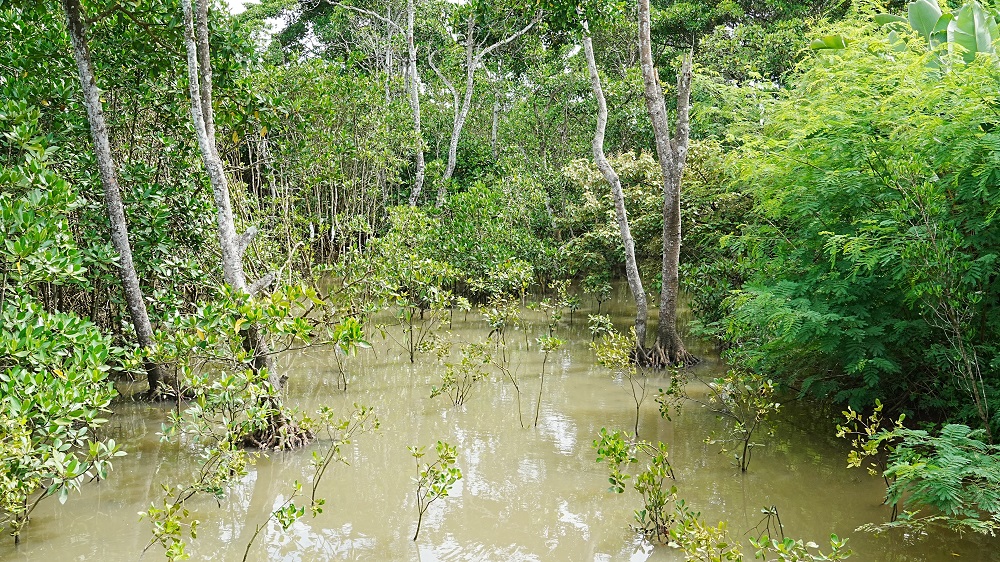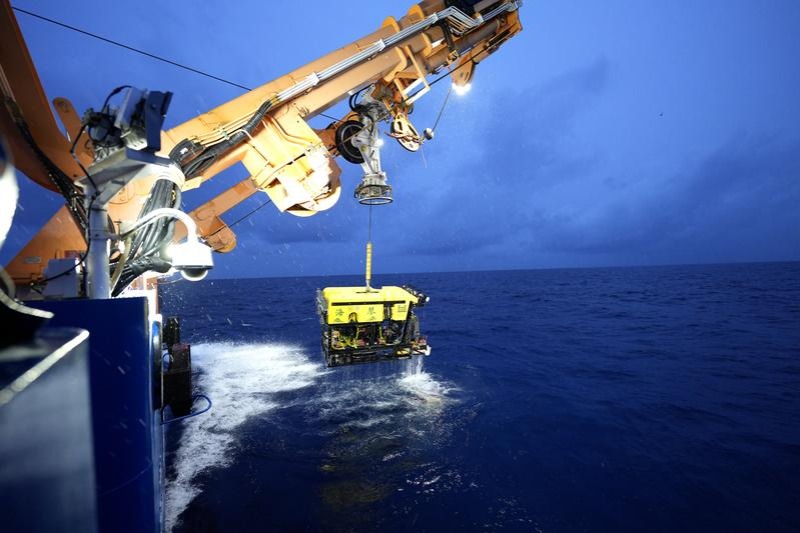Grassroots efforts drive mangrove conservation in Hainan


When a villager found a mangrove sapling on his salt-affected farmland, he promptly reported it to Wang Xia from the Dongzhai Port National Nature Reserve in Hainan province. The villager said he could not remove the sapling out of fear it would spread across his field.
Wang felt a surge of pride. "Not removing the sapling shows locals have built strong awareness of mangrove protection—a mindset shift achieved through generations of efforts," she said.
Home to China's largest mangrove forests and richest coastal biodiversity, the reserve was established in 1980 and named a Ramsar Site in 1992. The Ramsar Convention, signed in Ramsar, Iran, in 1971, is the world's only international treaty focused on wetlands.
Mangrove is one of the most effective natural carbon sinks. Insiders said mangroves store up to five times more carbon per hectare than terrestrial forests, calling them "the coast guards and lungs of the ocean". Beyond carbon sequestration, they protect shorelines, support fisheries and enhance biodiversity.
Yet locals had already been planting mangroves for decades to buffer cyclones and floods. Many nearby villages are located in low-lying areas prone to typhoon flooding, motivating residents to conserve mangroves.
In the early years, rangers studied forestry and soil ecology to better design planting zones and management strategies. Through persistent fieldwork, they evolved into seasoned professionals. "From 1997, I planted mangroves for nine years straight. In the beginning we would head out each day with just a bottle of water and a steamed bun," Li Shichuan, a researcher at the reserve, recounted.
Despite limited technology, the reserve has pursued innovative conservation. Since 1998, it has led aquaculture pond-to-mangrove conversion, pioneering techniques like direct seeding in barren areas.
Ecological outreach has strengthened local legal and environmental awareness. Residents now harmonize with mangroves through eco-tourism and poultry farming. In Fanying village, over 50 mu of former farmland became mangrove forest via natural propagation.
In addition to community-led efforts, the reserve also carries out large-scale restoration programs. The first phase of the Sanjiang Bay project, launched in 2019 with an investment of 67 million yuan, restored 2,550 mu of mangroves. A second phase, approved in 2022, aims to recover another 6,600 mu by 2025.
Globally, mangrove survival is threatened by climate change and sea-level rise, which alter salinity levels and inundate habitats. "Rising seas will inevitably affect our mangroves," Wang noted. "These trees are highly sensitive to salinity and tidal patterns. Their suitable habitat is gradually shrinking."
In response, rangers recycled discarded oyster shells into barriers against erosion—a method that has already protected 15,000 meters of coastline and expanded to Guangdong and Fujian provinces.
"Oyster shells are low-cost, abundant and non-polluting," Li explained.
Lyu Jiayu contributed to this story.
- Grassroots efforts drive mangrove conservation in Hainan
- US' 'freedom of navigation' based on self-interests, report says
- Water nourishes Xinjiang: Survival code of oasis civilizations
- Researchers develop hybrid downscaling model for high-resolution daily rainfall estimation
- First ultra-zero carbon facility debuts
- China's use of digital, AI tools praised by intl body




































